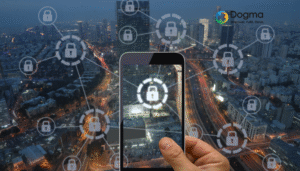Ensuring reliable information is crucial for any company’s success. Here are some strategies companies can use:
Data Quality Management: Implement processes to regularly clean and validate data to ensure accuracy and consistency.
Reliable Sources: Use reputable and verified sources for information, whether it’s market research, customer data, or financial reports.
Technology and Tools: Invest in robust information systems and tools that can collect, store, and analyze data efficiently.
Employee Training: Train employees on best practices for data entry, management, and analysis to minimize errors.
Regular Audits: Conduct regular audits and reviews of information systems and data to identify and correct any issues.
Data Governance: Establish clear policies and procedures for data management, including who has access to what information and how it should be used.
What are the main threats to information Confidentiality, Integrity, and Availability?
Information faces numerous threats in today’s digital landscape. Here are some of the most significant ones:
Phishing Attacks: These involve tricking individuals into providing sensitive information by pretending to be a trustworthy entity.
Ransomware: Malicious software that encrypts data and demands payment for its release.
Malware: Various types of malicious software, including viruses, worms, and trojans, designed to damage or disrupt systems.
Social Engineering: Manipulating individuals into divulging confidential information through psychological tactics.
Advanced Persistent Threats (APTs): Prolonged and targeted cyberattacks aimed at stealing data or spying on organizations.
Data Breaches: Unauthorized access to sensitive data, often resulting in the exposure of personal or financial information.
AI-Enabled Attacks: The use of artificial intelligence to enhance the scale and sophistication of cyberattacks.
Man-in-the-Middle (MitM) Attacks: Intercepting and altering communication between two parties without their knowledge.
Denial of Service (DoS) Attacks: Overloading systems to make them unavailable to users3.
These threats highlight the importance of robust information security and cybersecurity measures to protect information.
What are some preventive measures companies can take to safeguard information?
By focusing on these areas, companies can maintain the integrity and reliability of their information.
To safeguard information, companies can implement a variety of preventive measures. Here are some key strategies:
Cybersecurity Measures: Protect information from unauthorized access and breaches with strong cybersecurity practices.
Strong Password Policies: Enforce the use of complex passwords and regular password changes. Implement multi-factor authentication (MFA) for an added layer of security.
Regular Software Updates: Keep all software, including operating systems and applications, up to date to protect against vulnerabilities.
Employee Training: Educate employees about cybersecurity best practices, such as recognizing phishing attempts and avoiding suspicious links.
Data Encryption: Encrypt sensitive data both in transit and at rest to protect it from unauthorized access.
Access Controls: Implement strict access controls to ensure that only authorized personnel can access sensitive information.
Firewalls and Antivirus Software: Use firewalls and antivirus software to protect against malware and other cyber threats.
Regular Backups: Perform regular backups of critical data and store them securely to ensure data can be restored in case of a breach or loss.
Incident Response Plan: Develop and regularly update an incident response plan to quickly address and mitigate the impact of any security breaches.
Network Security: Secure your network with measures like intrusion detection systems (IDS) and intrusion prevention systems (IPS).
Physical Security: Protect physical access to servers and other critical infrastructure with security measures like locks, surveillance, and access logs.
Implement and a globally recognized standard for information security management: Like ISO 27001: 2022
By implementing these measures, companies can significantly reduce the risk of information breaches and ensure the confidentiality, integrity, and availability of their data.



